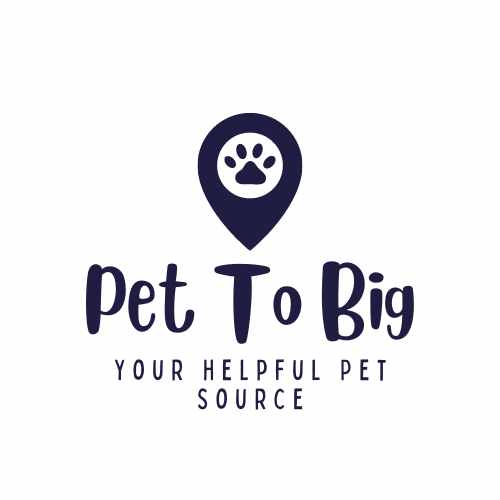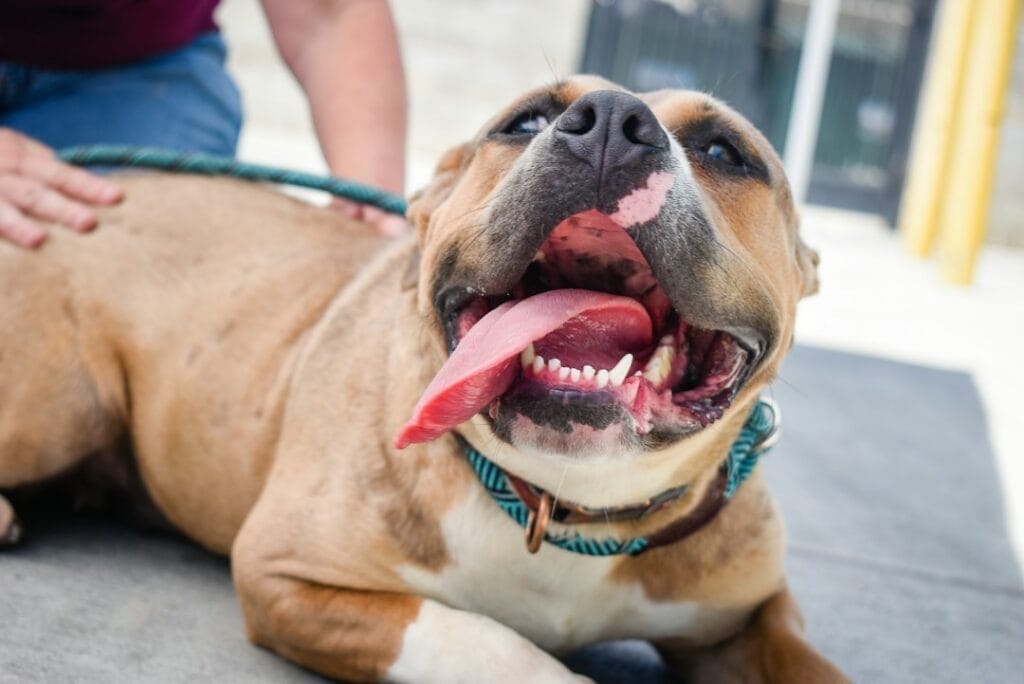Have you ever wondered how to clean dog teeth without brushing? Picture this: your dog’s teeth shining without ever needing a toothbrush. Sounds too good to be true? Well, it isn’t.
We’re diving deep into how you can maintain your furry friend’s dental health minus the brushing battle. You’ll learn why oral hygiene is non-negotiable for dogs and explore hands-off methods that keep those pearly whites clean.
From picking the right chews to diet tweaks and fun playtime strategies, when someone asks ” How to Clean Dog Teeth Without Brushing? ” We’ve got all bases covered. Stick around to transform how you think about dog dental care—no toothbrush required.
Table Of Contents:
- How to Clean Dog Teeth Without Brushing
- Understanding the Importance of Dental Care for Dogs
- Choosing the Right Dental Chews and Treats
- The Role of Diet in Maintaining Dog Dental Health
- Incorporating Playtime into Dental Care
- You Should Brush, But When You Can’t

How to Clean Dog Teeth Without Brushing
Maintaining your dog’s dental health is crucial for their overall well-being, but not all dogs tolerate traditional brushing. Fortunately, there are alternative methods to ensure their teeth stay clean and healthy without the stress of a toothbrush. Here are ten effective ways to clean your dog’s teeth without brushing:
Dental Chews and Treats
Dogs love treats, making dental chews an excellent option for cleaning their teeth while they enjoy a tasty snack. These products are designed to reduce plaque and tartar build-up through mechanical action as the dog chews.
Water Additives
Additives that you can mix into your dog’s water bowl help freshen breath and reduce bacteria in the mouth. It’s an effortless way to improve dental health daily.
Dental Wipes
Gentle yet effective dental wipes can be used to wipe away plaque from your dog’s teeth surfaces without needing a brush.
Rope Toys
Chewing on rope toys can help clean dogs’ teeth by acting like floss, getting in between the crevices of their teeth.
Natural Chews
- Bones (raw or synthetic) and antlers offer chewing resistance that helps scrape off tartar buildup from canine teething surfaces.
- Bully sticks also promote strong jaws along with cleaner teeth.
- Fresh Foods: Incorporating crunchy vegetables like carrots or apples into your pet’s diet can naturally scrub their teeth.
- Veterinary Dental Diets: Specially formulated kibbles have properties aimed at reducing plaque formation through mechanical abrasion when chewed.
- Avoid Sugary Snacks: Reducing sugary foods in your pet’s diet will decrease the likelihood of cavity-causing bacteria growth.
Note: Always consult with a veterinarian before introducing new items into your pet’s regimen.
Scheduling regular veterinary check-ups is essential for monitoring oral health progress.
For non-emergency questions about your dog’s dental health, call Ask A Veterinarian. They are available 24/7 to answer your questions.
By exploring these alternatives, you’re taking proactive steps towards maintaining optimal oral hygiene for your furry friend—no toothbrush required!
Understanding the Importance of Dental Care for Dogs
Dental care for dogs isn’t just about a bright smile or avoiding bad breath; it’s essential for their overall health. Just like in humans, poor oral hygiene in dogs can lead to dental diseases such as periodontal disease, found in over 80% of dogs by age three. Neglecting these concerns may escalate into more critical health complications.
Preventing Dental Diseases
The buildup of plaque and tartar on your dog’s teeth isn’t merely unsightly—it’s dangerous. Plaque harbors bacteria that can infect gum tissue and the roots of teeth, resulting in disease and tooth loss. What’s worse is that these infections don’t stay localized; they have a VIP pass into your dog’s bloodstream, where they pose threats to vital organs like the heart and kidneys.
To understand how widespread this issue is, consider that according to The American Veterinary Medical Association (AVMA), most pets show signs of dental disease by age three. This statistic alone underscores why preventative care through regular cleanings—professional or home—is crucial.
Extracting dog teeth is costly. Be ready for unexpected dental costs. Contact Pet Assure. Pre-existing conditions are accepted.
Promoting Overall Health
Keeping your pet’s teeth clean not only wards off pain and tooth loss from gum disease but also plays a vital role in ensuring they enjoy a lengthy and vigorous life. Infections originating from poor dental conditions are linked with systemic impacts affecting major organs, including the liver and heart valves—even leading to diabetes complications due to chronic inflammation.
A study highlighted by PubMed Central illustrates this connection well: dogs with moderate-severe periodontal disease have higher risks for endocarditis—a potentially fatal condition involving inflammation around one’s heart—and nephritis (kidney inflammation). These associations make clear why keeping up with your pup’s pearly whites goes far beyond cosmetics.
Alternatives to Brushing for Dog Dental Care
We get it; not every pooch sits still long enough for a thorough brushing session despite our best efforts—or patience levels. But fear not because there are alternative methods that both you and your four-legged companion might find more agreeable while equally effective at promoting dental health without turning grooming time into WrestleMania:
- Dental chews: These are designed specifically to clean teeth through mechanical action as your dog chews on them. Ensure you choose an appropriate size that is digestible enough not to cause gastrointestinal upset.
- Sure, I can help with that. Here’s how you might rewrite the last paragraph for better flow and completeness:
- Water additives: Think of it as mouthwash, but formulated safely. You’re effortlessly combatting plaque accumulation daily by merely incorporating this concoction into your routine.
Choosing the Right Dental Chews and Treats
Why Ingredients Matter
When it comes to picking dental chews for your furry friend, what’s on the inside counts as much as anything. The best treats are those that pack a punch in fighting plaque and tartar while being digestible. These ingredients are the secret agents working behind the scenes; they’re tough on grime but gentle on your dog’s stomach.
A glance at the Veterinary Oral Health Council’s list of approved products can help you find chews with tested and proven effective ingredients. From enzymes that break down plaque to natural abrasives like sweet potato, choosing wisely means you’re giving more than just a treat—you’re bolstering oral health with every bite.
If you’ve ever doubted whether those extra minutes reading labels at the pet store were worth it, let me tell you—they are. My experience has shown me how certain ingredients can affect my dogs’ breath and enthusiasm for their daily “toothbrushing” routine.
Finding That Perfect Size and Hardness
The size and hardness of dental chews matter more than most people think. It’s like Goldilocks finding her perfect bed—not too hard, not too soft, but just right. A chew too hard might risk damaging teeth or pose a choking hazard, especially for smaller breeds or older dogs whose teeth may not be as strong.
Conversely, it won’t provide enough resistance to scrape away plaque effectively if it’s too soft. You want something that encourages them to gnaw extensively without putting undue stress on their jaws or teeth—think durable yet pliable materials capable of lasting longer than two bites into playtime.
This is where firsthand experience shines through; I’ve seen how different textures affect my pups’ chewing habits—and let me tell ya’, finding that happy medium makes all the difference. Whether experimenting with various brands or consulting expert advice online, remember that safety always comes first.
Dental Chew Safety Tips
Safety should never take a back seat when selecting dental treats for your canine companion; we aim for healthier mouths here. Always supervise your dog during chew time because even though we strive for perfection in the selection, unexpected things happen (like pieces breaking off unexpectedly).
Besides watching out during snack time, ensuring top-notch product quality by choosing items specifically designed for canine consumption will ensure your furry friend stays healthy and happy.
Amazon carries a wide variety of dog chews.
Key Takeaway:
When choosing dental chews, look for proven ingredients that fight plaque but are easy on the stomach. Size and hardness matter too—find a balance to avoid harm while effectively cleaning teeth. Always prioritize safety by supervising chew time and picking quality treats designed for dogs.
Incorporating Playtime into Dental Care
Who knew that playtime could double as teeth-cleaning time? Well, it turns out that the right toys and activities can significantly benefit your dog’s dental health. This is not just about fun and games; it’s a strategic move to keep those pearly whites shining without a toothbrush in sight.
Puzzle feeders aren’t just fantastic brain teasers—they’re also unexpected allies in combating poor oral hygiene by stimulating chewing action, like when working hard to extract tasty rewards from within their labyrinth-like structures. Tug-of-war presents another golden opportunity disguised as rowdy fun. Through tugging motions, fibers of a rope toy effectively ‘floss’ between tight spaces, much akin to how dental floss works for us humans. Engaging in this playful exercise deepens your connection with your furry friend and serves an essential function in preserving oral hygiene.
You Should Brush, But When You Can’t
Cleaning your dog’s teeth without a brush is not just possible; it’s practical. We explored the basics of how to clean dog teeth without brushing, like chewing toys and modifying their food.
Selecting the right treatment matters. So does incorporating play that doubles as dental care.
Maintaining oral hygiene in dogs is crucial for their overall health. We discovered a method for keeping our dog’s teeth sparkling clean without the need for brushing, turning maintenance into an enjoyable experience.
So start today. Make those small changes for big smiles tomorrow.

